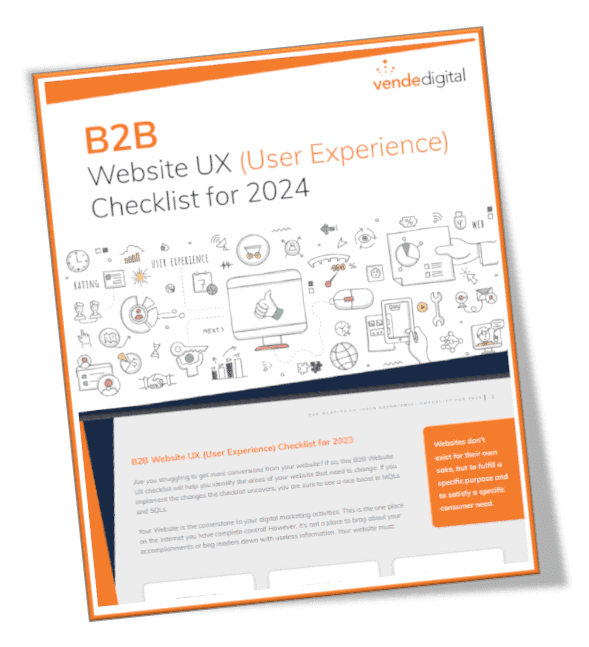A salesperson can’t do their job well without a steady flow of customers coming through the door. No matter how great their sales pitch, they aren’t going to convert a customer that doesn’t exist. And, there’s no point in putting up billboards and getting people to come inside your store if there isn’t a salesperson there to guide them along their customer journey. Otherwise, all of your customers are just standing around staring at each other. Search engine optimization and conversion rate optimization, it doesn’t have to be one or the other. If these two optimization strategies have been at odds, they don’t need to be. In fact, SEO and CRO should have a rather symbiotic relationship. They rely on each other in order to function at their best. Here are 4 ways to improve website conversion with SEO.
SEO and CRO together
Search engine optimization and conversion rate optimization should be a complementary, multistep process in marketing your business. Depending on your marketing strategy, and your business’ needs, you might want to create different pages for different stages of your conversion funnel when you are setting your marketing plan. You might find yourself designing SEO-focused pages in relation to CRO-focused goals.
This change in focus could mean a change in content. Instead of creating content to convert your visitors into buyers you would produce content to get your site found and rank better. Then each page would have a goal toward micro or macro conversions, filled by calls to action. Search engines are placing a higher priority on user experience, as they want to offer users the best results for their searches. That’s why your website needs to not only match a user’s search through SEO, but provide a solution to their problem through CRO.
Make the connection
If a user clicks on your ad and finds themselves somewhere they don’t expect, they won’t stay. It’s vital to maintain a strong connection between an ad, or organic search result, and a specific landing page. This connection reassures users that they have arrived in the right place. The strength of that connection could determine how long a user stays on your site and whether they follow any calls to action.
Tips for maintaining that strong connection include matching title tag and H1 heading, designing a clear site structure, and adjusting your layout based on keywords.
SEO A/B Testing
If done correctly, A/B testing can help you capture more leads, get more visitors, and increase sales. It’s pretty simple, for SEO A/B testing, each user sees different variations of the same page and the page which converts the higher percentage of users is the winner.
While Google encourages A/B testing, and has said that doing an A/B test will have little to no impact on your website’s search rank, there are some steps you will want to take to perform A/B tests without harming your SEO. These steps include avoiding cloaking errors and using the rel=canonical tag.
Don’t use an A/B testing platform to make significant changes. Too many differences in design, scope, and content from your original page could cause Google to recognize major page changes as cloaking. If an A/B test has more than one URL, put the rel=canonical link pointing to your original page on all of your alternate links. This will direct bots indexing your site to the original page.
Improve Page Load Time
Load time is a major contributor to the abandonment of a page. Up to one-second delays are bearable for users. But a 10-second delay? That loading time may make users leave a site immediately. With such a long load time, even if they stay, it’s not likely they will complete the call to action. 47 percent of shoppers expect a web page to load in two seconds or less. At three seconds, 40 percent of shoppers will abandon the website. Over half of online shoppers say that quick page loading is important to their site loyalty.
To improve page-loading time, and get those loyal customers, use a website speed test tool to test your website’s page load time on both desktop and mobile devices. These speed tools allow you to see not just the front-end elements like load time and download speed, but also back-end elements like HTML, JavaScript, and CSS. Images can be a major contributor to slow load times. Optimize images by resizing and compressing them. Avoid external embedded media and host all content on your own server. Get rid of bulky code, like line breaks and excess spacing, which can create slower load times.
Leverage Videos
Explainer videos play a huge role in increasing conversion rates. These short videos can also help increase page engagement and time spent on a website. Visitors’ attention spans are short, and the average duration of a watched video is less than three minutes.
To grab your visitors’ attention, you need captivating content. And to support video, your hosting must be fast. You’ll get even better results with video if you incorporate SEO by using the right keywords and uploading videos to your own domain. Create a sitemap with key information including title and category to let search engines capture the information. And don’t think of videos as one-way communication, add prompts to interact with the viewer.
Just driving more traffic to your site doesn’t guarantee more conversions. Which is why an SEO program needs to be complemented by a CRO program. Your site should be easy to find, provide value to the user, and offer solutions that address your users’ needs. When they work together you can improve website conversion with SEO.
Sign up for a free website analysis

